Published Dec 6, 2019
Simon & Schuster and 40 Years of Star Trek Publishing
Writer Dayton Ward takes us through the publishing world of Star Trek, beginning with the release of 'The Motion Picture.'
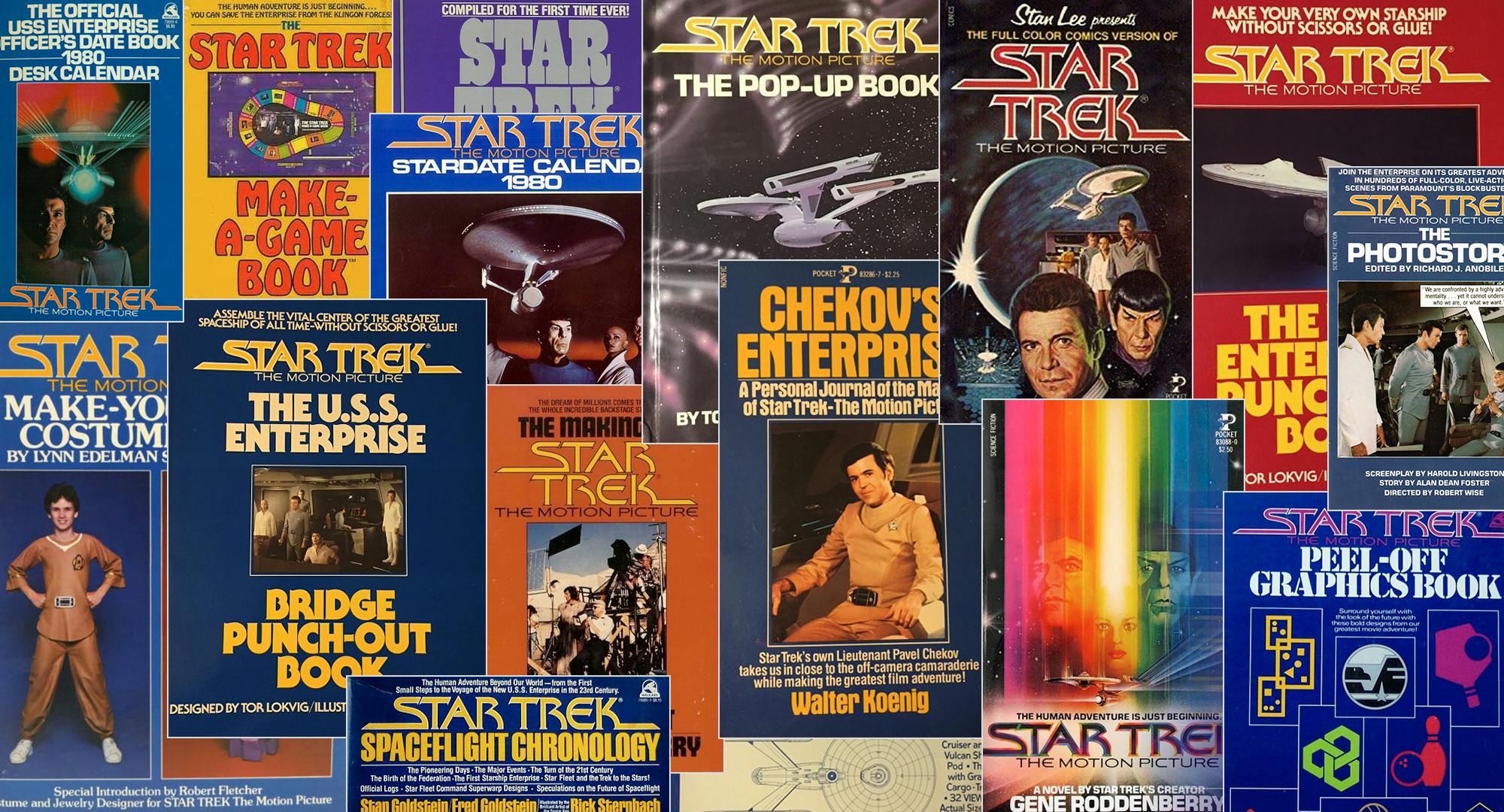
StarTrek.com
Forty years ago this month, Star Trek returned in a big way with the theatrical release of Star Trek: The Motion Picture. During the decade following the original series’ cancelation, fans of Captain Kirk, Mister Spock, and the voyages of the Starship Enterprise had to satisfy themselves with reruns of those 79 episodes, rare sightings of Star Trek: The Animated Series, and whatever merchandise they happened to find here and there. Toys, models, and games were among the most common items, along with a host of fan-created publications, as well as the occasional comic book from Gold Key Publishing or novel from Bantam books.
Bantam’s license was drawing to a close at the end of the 1970s in lieu of a new home for Star Trek publishing: Simon & Schuster. Through its imprints Wallaby Books, Wanderer Books, and Pocket Books, S&S set out to unleash their new license in bold fashion with sixteen titles planned to tie into the then upcoming big-budget Star Trek film. A staggered rollout of new books and other tie-ins aimed at adults and kids began in the months leading up to the movie’s release on December 7th, 1979.
As we celebrate the first Star Trek feature film’s 40th anniversary this month, we also commemorate four decades of Star Trek publishing by taking a look back at how it all began:
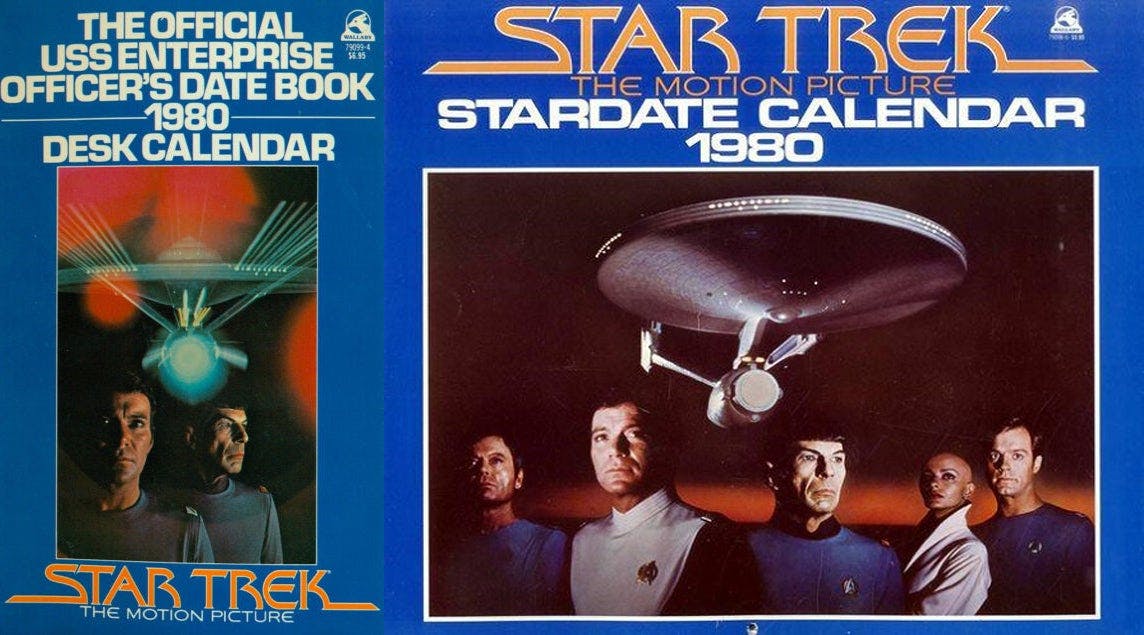
StarTrek.com
Things kicked off in admittedly modest fashion starting in September 1979 with two calendars and the first title aimed at younger fans. The Star Trek: The Motion Picture Stardate Calendar 1980 was your typical wall calendar featuring full-color publicity photos and stills from the new film. If desk planners were more your speed, you could instead select The Official U.S.S. Enterprise Officer’s Date Book: 1980 Desk Calendar, which included 52 black-and-white photos, each partnered with a weekly planning page.
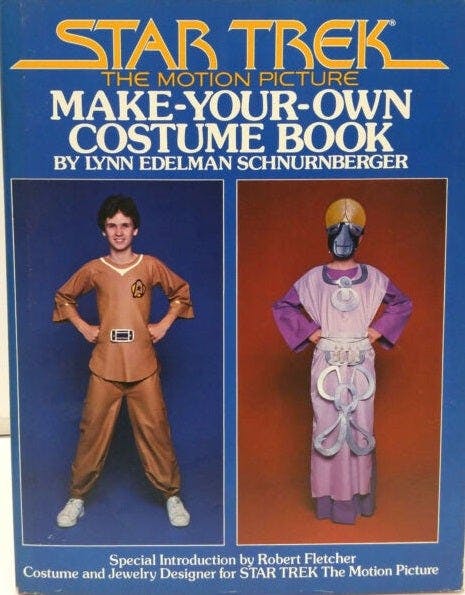
StarTrek.com
Rounding out September’s offerings was the Star Trek: The Motion Picture Make-Your-Own Costume Book. Written by Lynn Edelman Schnurnberger, this book offers a guide to creating several of the film’s new uniforms and alien wardrobe designs. While none of the resulting creations could ever be confused with something seen on screen, the book is still a fun early entry in what would become the cosplay segment of Star Trek fandom. It also has a preface written by Robert Fletcher, the movie’s costume designer.
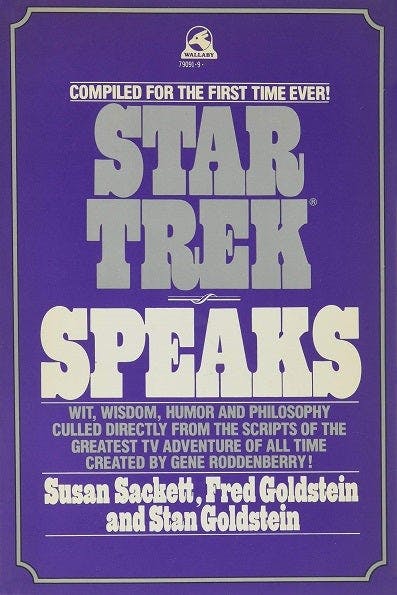
StarTrek.com
Simon & Schuster really started getting serious in October with three more releases. First up, Star Trek Speaks, written by Gene Roddenberry’s longtime personal assistant, Susan Sackett, along with Fred Goldstein and Stan Goldstein. A tie-in to the original series rather than the new film, it’s a collection of memorable, inspirational, and thought-provoking quotes from various episodes and ordered into themes and topics including “Society and Government,” “Men and Women,” “Science and Technology,” and “War and Peace.”
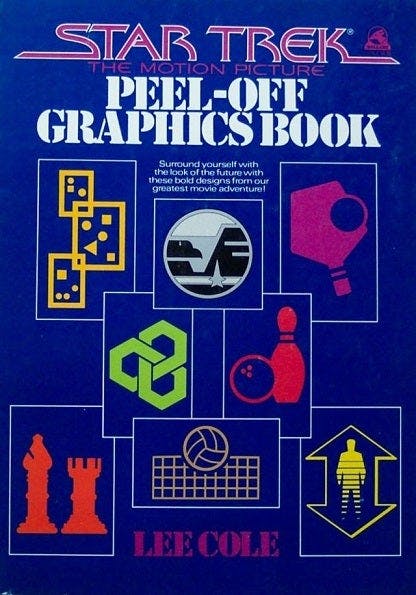
StarTrek.com
Also released was the Star Trek: The Motion Picture Peel-Off Graphics Book. Assembled by artist Carole Lee Cole, who served as a graphic designer for the film, the book was stuffed with decals depicting the signage Cole created for the refit U.S.S. Enterprise as well as Starfleet Headquarters, the Epsilon IX outpost, and the space station where Admiral Kirk reunites with his former chief engineer, Montgomery Scott. Kids — and those of us who still act like kids — found plenty of places to put those decals, but of course we bought a second copy of the book to keep minty-fresh and collectable.
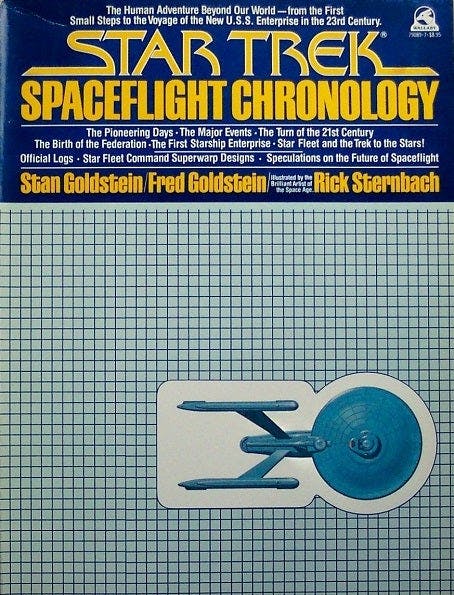
StarTrek.com
Rounding out the month’s releases was the Star Trek: Spaceflight Chronology. This oversized trade paperback posited a timeline of human space exploration beginning with the first unmanned satellite launches in the 1950s through what was then believed to be the launch of the new film’s refit U.S.S. Enterprise in the 23rd century. The book is filled to overflowing with news reports, official “log entries,” personal anecdotes, and other details as written by Stan and Fred Goldstein. Their text accompanies page after page of line-art and full page paintings by longtime Star Trek veteran Rick Sternbach. Though the book itself as been rendered all but obsolete, not just by real history but also the future imagined by subsequent Star Trek films and television series, the Spaceflight Chronology remains a solid, fan-favorite reference work.
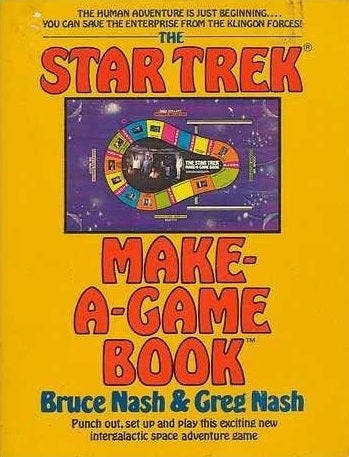
StarTrek.com
By comparison, November was a quiet month as it featured only a single release: The Star Trek Make-A-Game Book. Though it didn’t carry the logo from the new film, cover photos leave no doubt it was meant as a tie-in. Written and illustrated by Bruce and Greg Nash, it contains everything required for kids (and grown-ups who are still children at heart) to assemble their own fairly simple board game pitting the Starship Enterprise against Klingon battle cruisers. There were and are more complex Star Trek board games out there, but having to punch out and assemble the various pieces might appeal to a budding arts and crafts fan.
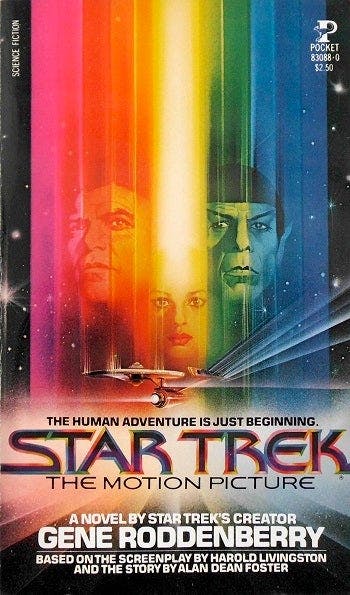
StarTrek.com
December brought not only Star Trek: The Motion Picture’s theatrical release but also Gene Roddenberry’s novelization of the film. Released in mass-market paperback along with a limited edition hardcover, Roddenberry’s adaptation of Harold Livingston’s screenplay was Pocket Book’s first Star Trek novel under their new license, a publishing venture which continues to thrive. As far back as the late 1970s, Roddenberry was known to be working to publish a novel based on an un-produced Star Trek script, "The God Thing." Despite several attempts, the project never came to fruition. As for his novelization of Star Trek: The Motion Picture, Simon & Schuster celebrated its 40th anniversary earlier this year with a new trade paperback edition as well as making it available in e-Book formats and even commissioning a brand-new audiobook adaptation narrated by frequent Star Trek reader Robert Petkoff.
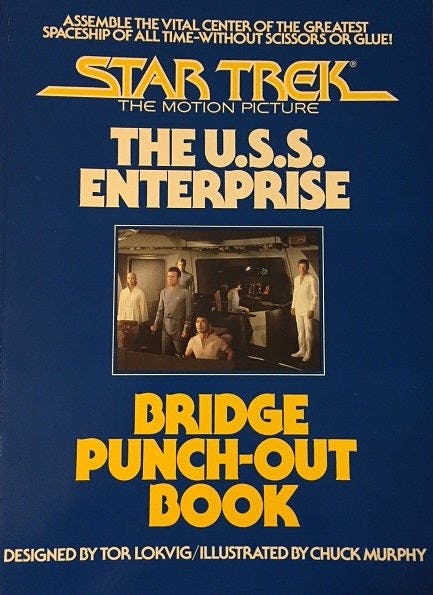
StarTrek.com
Accompanying the novelization was The U.S.S. Enterprise Bridge Punch-Out Book, which provides everything needed to assemble a cardstock model of the refit starship’s brand-new and shiny command center as seen in the film. Written by Tor Lokvig and illustrated by Chuck Murphy, it was designed to work without scissors or glue, this made for an easy craft project aimed at younger fans.
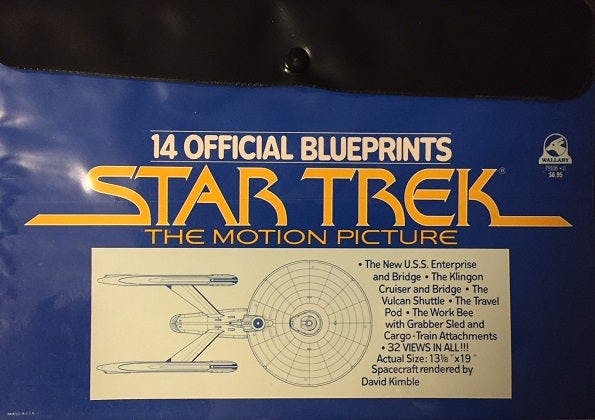
StarTrek.com
A new year did not mean an end to new products tying into the movie. Toys, games, and other items kept coming, and remained true for Simon & Schuster. Arriving in January 1980 was the Star Trek: The Motion Picture Blueprints. As Franz Joseph had done for the original series Enterprise just five years earlier, artist David Kimble with the assistance of art designers Andrew Probert and Carole Lee Cole created technical drawings not just for the refit starship as well as the new Klingon battle cruisers and other vessels seen in the film. The resulting 14 drawings came packaged in a vinyl envelop similar to that used for Joseph’s original “construction plans.”
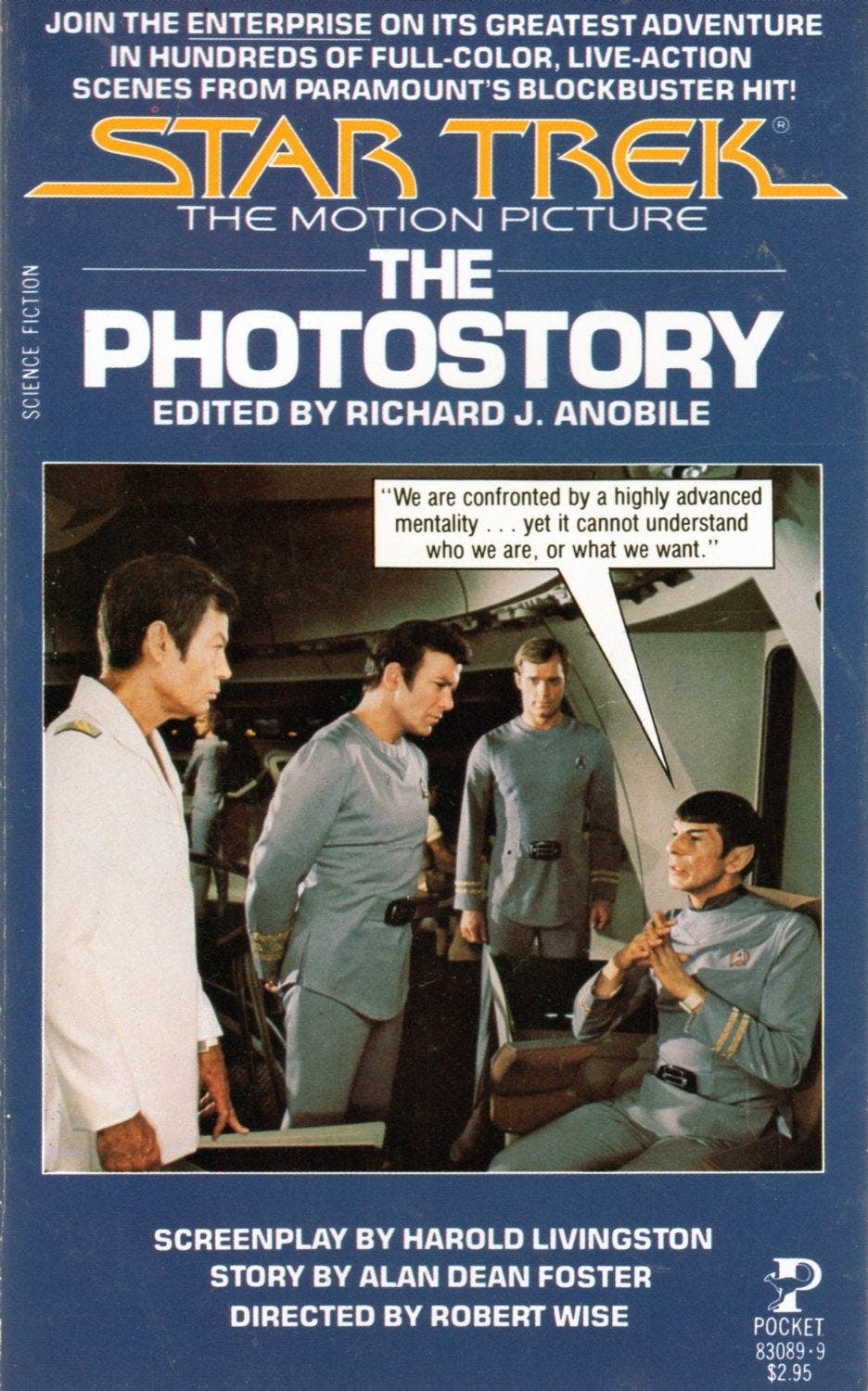
StarTrek.com
Alongside the blueprints came Star Trek: The Motion Picture – The Photostory. Such books, including the set of 12 “Star Trek Fotonovels” published by Bantam Books between 1977-1980, were popular in the age before home video. Edited by Richard J. Anobile, the book contained hundreds of color stills from the film accompanied by dialogue and thoughts rendered in the style of comic book word balloons and caption boxes.
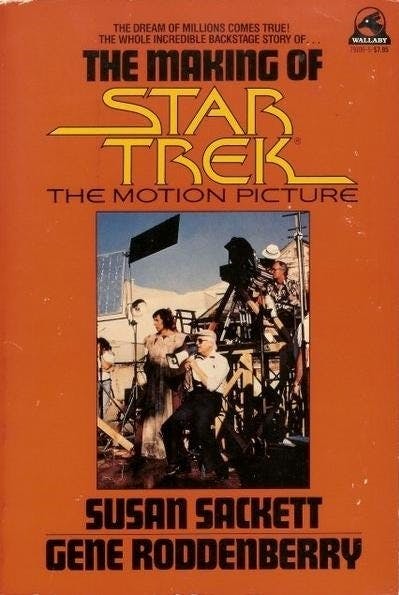
StarTrek.com
February brought new reading for fans interested in what happened behind the scenes of the new film. The Making of Star Trek: The Motion Picture, which chronicles the journey of Star Trek’s revival from a new television series as envisioned in 1975 to the feature film’s release four years later. Written by Susan Sackett and with a preface by Gene Roddenberry, the book offers a detailed account from Sackett’s point of view as well as anecdotes and other accounts provided by members of the movie’s production crew and cast.
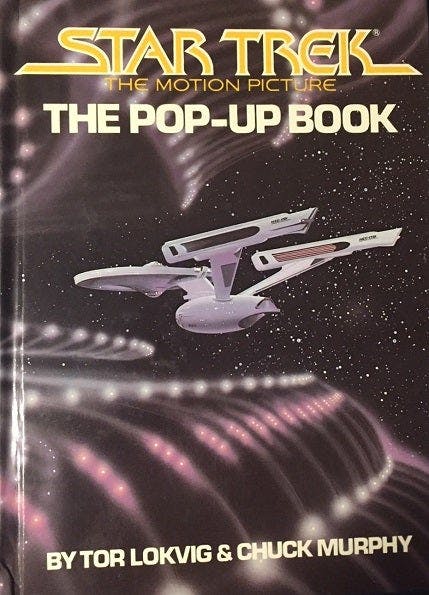
StarTrek.com
Also released in February were two more books aimed at younger readers. Another collaboration between writer Tor Lokvig and artist Chuck Murphy, The U.S.S. Enterprise Punch-Out Book is another cardstock model project for the craftier fans. Lokvig and Murphy also brought readers Star Trek: The Motion Picture – The Pop-Up Book, which retells the film’s story in a series of wonderful illustrations including pop-up versions of the new Enterprise, Klingon warships, and even V’ger itself.
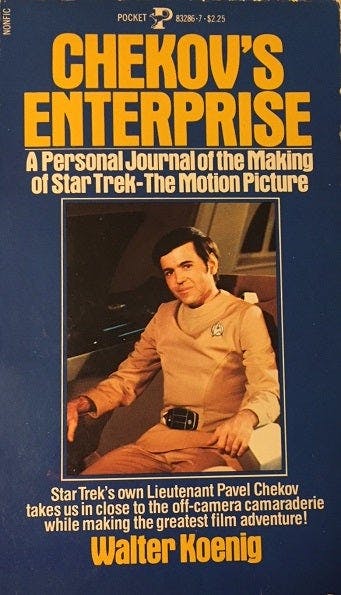
StarTrek.com
For March, Pocket Books released something of a companion to Susan Sackett’s earlier behind-the-scenes account with Chekov’s Enterprise: A Personal Journal of the Making of Star Trek: The Motion Picture. Originally written by actor Walter Koenig as an “on-set diary” during the film’s production, the book naturally offers insight into the day-to-day happenings from his point of view, from reuniting with his fellow cast members to dealing with the obstacles that come with a such a complicated project and the challenge to “get it right.” It’s a wonderful, personal look at what it took to bring about Star Trek’s return.
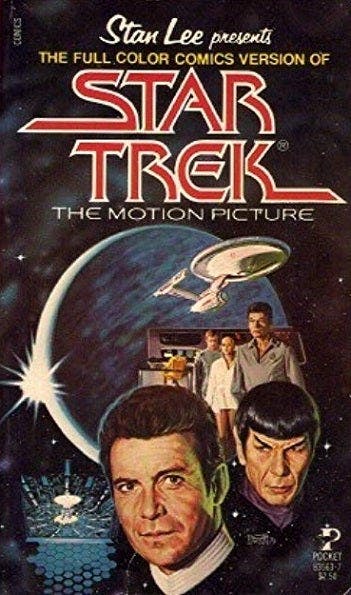
StarTrek.com
While not originally part of Simon & Schuster’s plans, Pocket Books still was able to publish a paperback edition of Marvel Comics' version of Star Trek: The Motion Picture. Written by Marv Wolfman and illustrated by Dave Cockrum and Klaus Johnson, this comics adaptation originally appeared as a magazine-sized “Super Special” at the time of the film’s release. It also served as the first three issues of Marvel’s monthly Star Trek comic. For this edition, the individual art panels were freed from their original layout to facilitate reading in paperback form.
Of all the titles Simon & Schuster slated for publication as promotions to the new film, only one, the Star Trek: The Motion Picture Iron-On Transfer Book, failed to materialize. Even with mixed reviews, the film itself generated significant merchandising revenue and created or revitalized fan interest enough for Simon & Schuster to launch a publishing program that continues to this day.
The human adventure, on the screen as well as the page, was truly just beginning.
Dayton Ward (he/him) is a New York Times bestselling author or co-author of numerous novels and short stories, including a whole bunch of stuff set in the Star Trek universe, and often working with friend and co-writer Kevin Dilmore. As he’s still a big ol' geek at heart, Dayton is known to wax nostalgic about all manner of Star Trek topics over on his own blog, The Fog of Ward.

